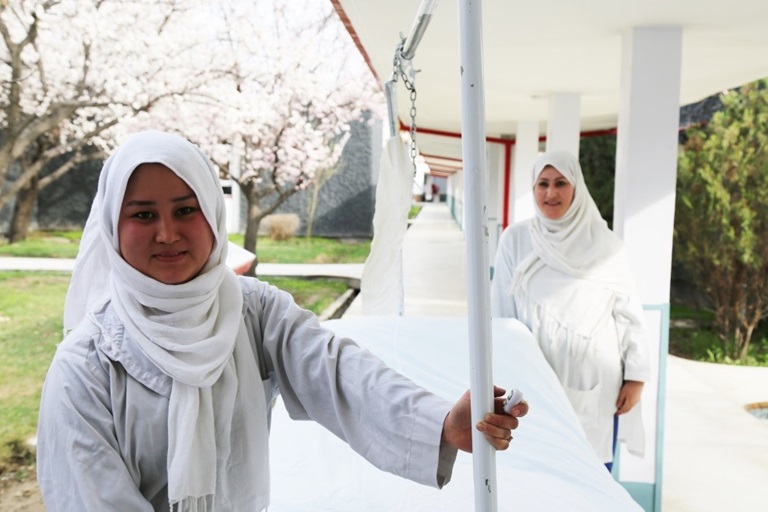After fighting broke out in the rural district of Chark-Logar, Salim and his family were forced to flee their home. During the firefight, his brother was killed and Salim was shot in the stomach. It took Salim two hours until he reached a first aid post. In the process, he became separated from his wife and children. Two days later he was transferred to a hospital run by Emergency, an Italian NGO specialized in trauma care.
Salim's story is not unusual in today's Afghanistan, which is in the midst of one of the longest protracted complex emergencies in the world. It faces prolonged conflict, frequent natural disasters and mass population movements. The situation is made even more complicated with masses of internally displaced people, returnees, and refugees congregating in both urban centres and their outskirts. The already overwhelmed health facilities are often unable to absorb the additional burden of the new arrivals.
The Ministry of Health, with support from the Health Cluster, led by WHO, is struggling to rebuild a health system badly frayed after years of conflict. The challenges are many: damaged infrastructure, a lack of trained healthcare providers, and under-resourced healthcare facilities. The situation is further complicated by a lack of security and pervasive poverty.
More than three fourths of the population now has access to primary healthcare services but important gaps remain. Trauma care and trauma-related disability is one of the most critical issues facing Afghanistan, and the already overstretched public health system cannot tackle the problem alone.
Much of the trauma care in the country’s capital city, Kabul, is provided by the Italian NGO Emergency, which provides specialized trauma care that is unavailable in standard government facilities. Emergency has worked in the country for nearly two decades and has treated over five million patients, and its work has been recognized by the Ministry of Health. Emergency’s Surgical Centre for War Victims in Kabul treats both the local population and welcomes incoming patients from remote areas. Its services are free of charge.
In 2017, at the request of WHO and in collaboration with the district and provincial Health Directorates, Emergency trained 497 doctors and nurses from the provinces in pre-hospital trauma and mass casualty management. Emergency, which is a member of the Health Cluster, funds its international staff and operations through private donations, with additional funding from WHO, the Common Humanitarian Fund, and the European Commission.
In the long-term, quality healthcare for all Afghan citizens will only be met by a combination of specific goal-oriented projects, foreign aid, domestic responsibility, and time, said Dr David Lai, Afghanistan Health Cluster Coordinator. The work being done by Emergency is an example of how the country needs to utilize diverse resources to rebuild its health sector, he said.
“The Health Cluster‘s mission is to support the Ministry of Public Health to provide leadership to humanitarian health response in order to prevent and reduce crisis-related illness and death. Providing healthcare for those displaced by war means healthier lives for millions, turning despair into hope,” said Dr Lai.

WHO/T. Hongisto
At the request of WHO, Emergency trained 497 doctors and nurses
More information on the Basic Package of Health Services in Afghanistan
A comprehensive basic package of health services (BPHS) and essential package of hospital services (EPHS) was developed by Ministry of Public Health (MoPH) and partners in 2003 and 2004 and health services are delivered through innovative contracting-out mechanism by (inter)national NGOs and in selected provinces by the MoPH.
This public health approach led by MoPH, with strong support from multi- and bi-lateral development partners, has delivered considerable progress under difficult circumstances; health indicators and service delivery have significantly improved. The number of health facilities and health worker have substantially increased, coverage of BPHS/EPHS (Public Health system) is currently more than 60% within one hours walking distance.
Though the health situation has improved, many health indicators remain extremely worrisome, the quality and coverage of health services needs to be expanded including hospital and trauma care. Sustained and increased health financing will be required.
